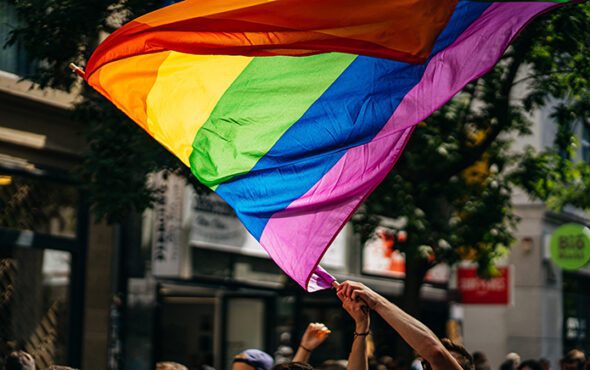
Those aged between 16 and 24 are more than twice as likely to identify as a member of the LGBTQ+ community compared with the general population, according to new data from the 2021 Census.
The data, which was released on 6 January, marks the first time that figures on sexual orientation and gender identity have been included in the census, with 92.5% of the population answering the question on sexual orientation and 94% responding to the gender identity question one.
A total of 1.5 million respondents (3.2% of the population aged 16 years or older) said they identified as LGB+, with urban areas seeing the highest proportions of LGBTQ+ people.
Around 748,000 (1.5%) of those who answered said they are either gay or lesbian, only 0.2% more than the 624,000 (1.3%) who described themselves as bisexual.
READ MORE: Being bisexual almost as common as being gay or lesbian in England and Wales, census shows
An additional 165,000 (0.3%) selected “other sexual orientation”.
New figures released on 25 January showed that Gen Z (those aged between 16 and 24) were the most likely to identify as LGBTQ+ in England and Wales at a rate of 6.91% to 3.16%, respectively.
Of the over 70s who came of age while homosexuality was still a criminal offence, only 0.37% identified as LGB+.
“Today is another historic step forward”
Reflecting on the groundbreaking data, Nancy Kelley, Chief Executive of Stonewall, said: “For the past two centuries of data gathering through our national Census, LGBTQ+ people have been invisible, with the stories of our communities, our diversity, and our lives missing from the national record.
“Today is another historic step forward after decades of Stonewall campaigning to record sexual orientation and gender identity in the Census, finally painting an accurate picture of the diverse ‘Rainbow Britain’ that we now live in, where more and more of us, and in particular more young LGBTQ+ people than ever before.
“This data is a reminder that our leaders, institutions and governments need to step up efforts to truly champion our communities rather than using our lives in a ‘culture war’ that does not resonate with the experiences and values of voters.”
READ MORE: Here’s what the 2021 census says about LGBTQ+ Britons
Findings from the 2021 census for England and Wales will be published in stages over a two-year period, while Scotland’s are expected later this year after it faced delays due to the COVID-19 pandemic.
No questions about gender identity were asked in Northern Ireland’s census, though results on its question about sexual orientation are also expected sometime in 2023.



